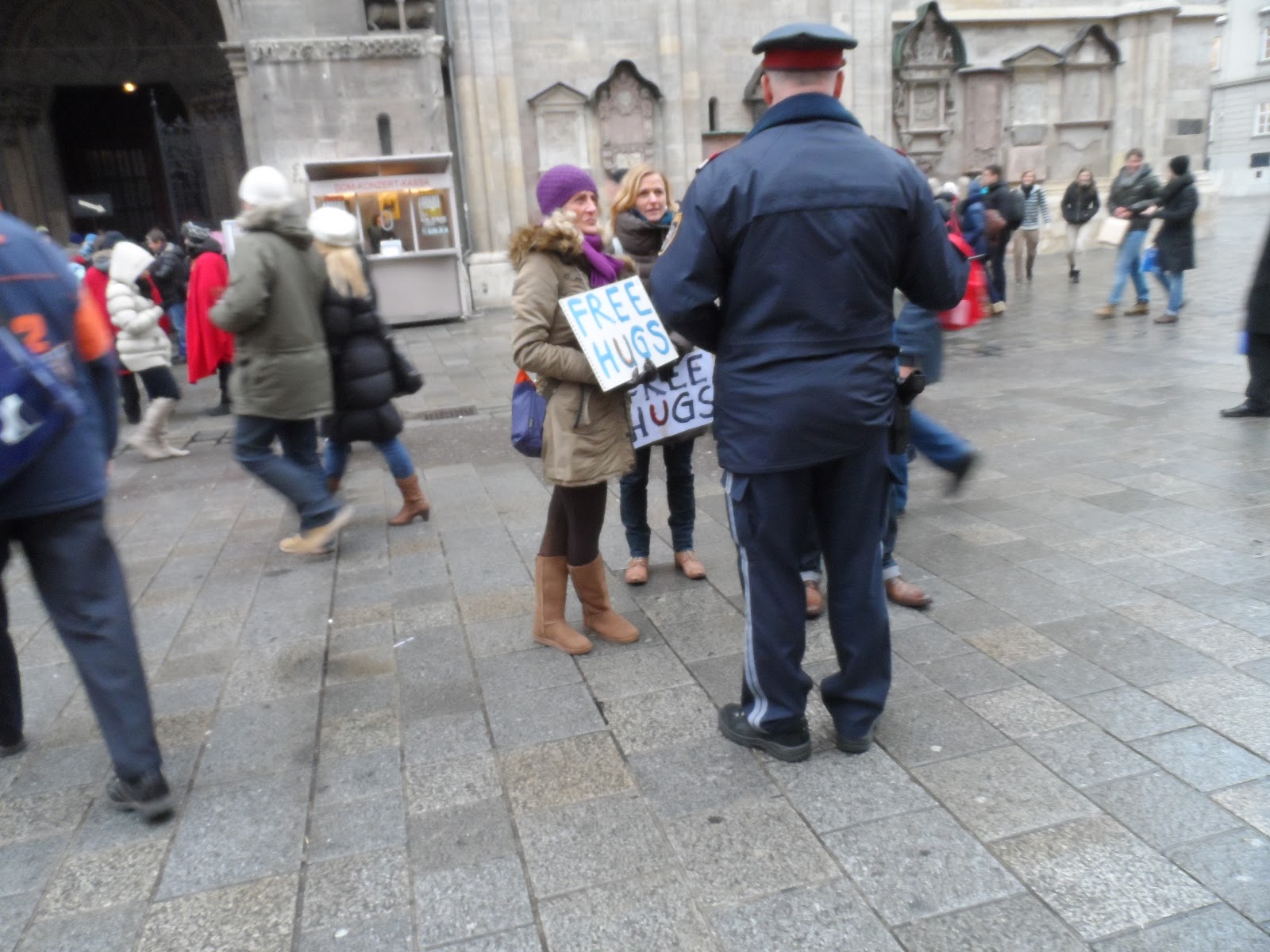The next day, we had to trek to the grocery store for lasagna ingredients, cookie decorations, and other assorted products. The white stuff was everywhere.
Be careful.
This is a glimpse of Ben in the future. We used the buggy to carry groceries.
Amy had Leinie practice his tricks during our stay. She gave her commands and praise in German.
We took the opportunity to use an oven (our kitchenette here is just two burners) to cook lasagna.
And, by "we," I mean I sat, did crosswords, and took pictures.
For lunch one of the days, we had this delicious Jause spread. To Jaus, you take a piece of bread (in this case, homemade by Amy); coat it with spread, jam, or butter; and layer it with meats, cheese, pickles, tomatoes, peppers, and whatever else. We each had a little cutting board to prepare our Jause. So good.
Christmas cookies with decoration FAILS.
On Christmas Eve, the Christkind came! Somehow, when Amy, Leinie, Ben, and I were locked in their bedroom, the Christkind (literally, the Christ child) visited the apartment. When he left, a bell rang, and we knew it was safe to come out. He left us all presents!
For Austrians, the primary day to celebrate is the 24th. It's a day for the family to be together, for the Christkind to bring presents, and for the family to go to church. While some Austrians decorate with Santa Claus, it seems like most people here do not like Santa, whom they call the Weihnachtsmann (the Christmas man). They associate Santa with America and with consumerism. You can see the ads for Coca-Cola at train stations and around town, and I saw a few ads defaced. Instead, their tradition is that the Christkind brings presents, and that's why we had to hide in the bedroom for Johannes, ahem, the Christkind, to visit the apartment and then leave.
We played card games in which I dominated for quite a while, and hey look! Trachten!
They gave us a little fashion show.
For lunch on Christmas Day, we went to Heurigenlokal Wittmann in nearby Neudörfl. The wreath around the sign means that they're open for business. It's in the Austrian state of Burgenland, where much of Austria's wine is produced. Basically, it's a winery that serves hot and cold food. This type of restaurant can be found in Burgenland and in Styria. Another type of restaurant from the same area in Austria that we have yet to visit together is a Buschenschank. There, the focus is more on the food.
Don't be deceived; the food was very tasty! I had hühner schnitzel and Ben had beef goulash.
Johannes and Amy, thank you for having us and for showing us Vienna and Wiener Neustadt! You both were wonderful hosts and we're excited for more adventures in the spring!












































